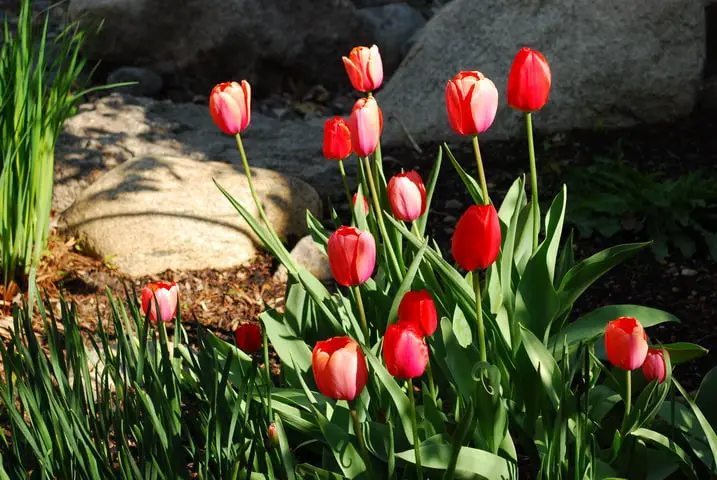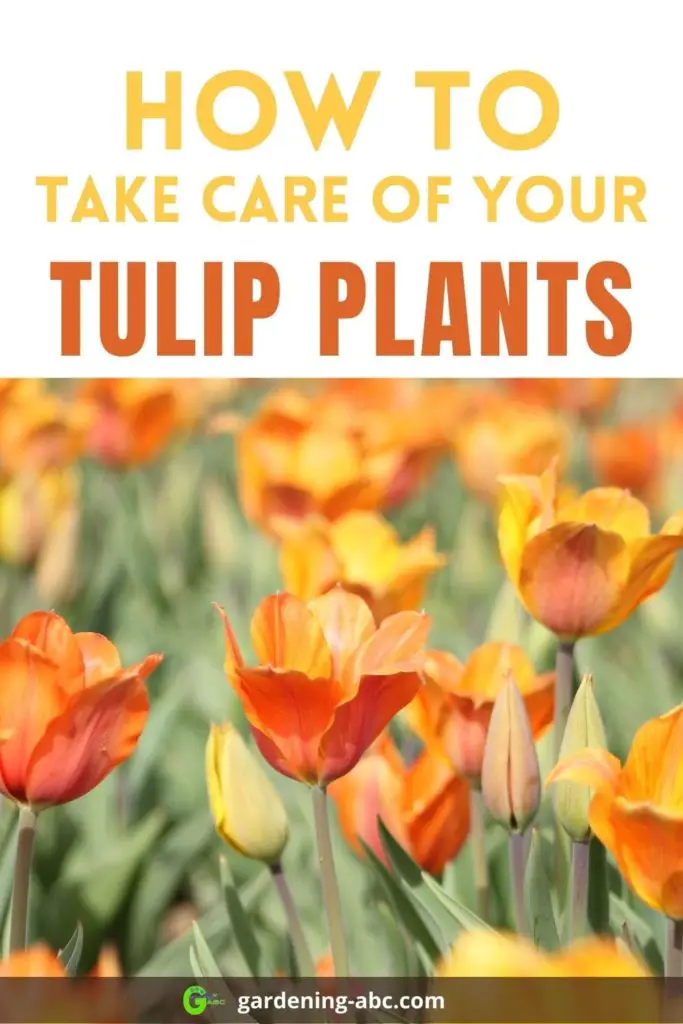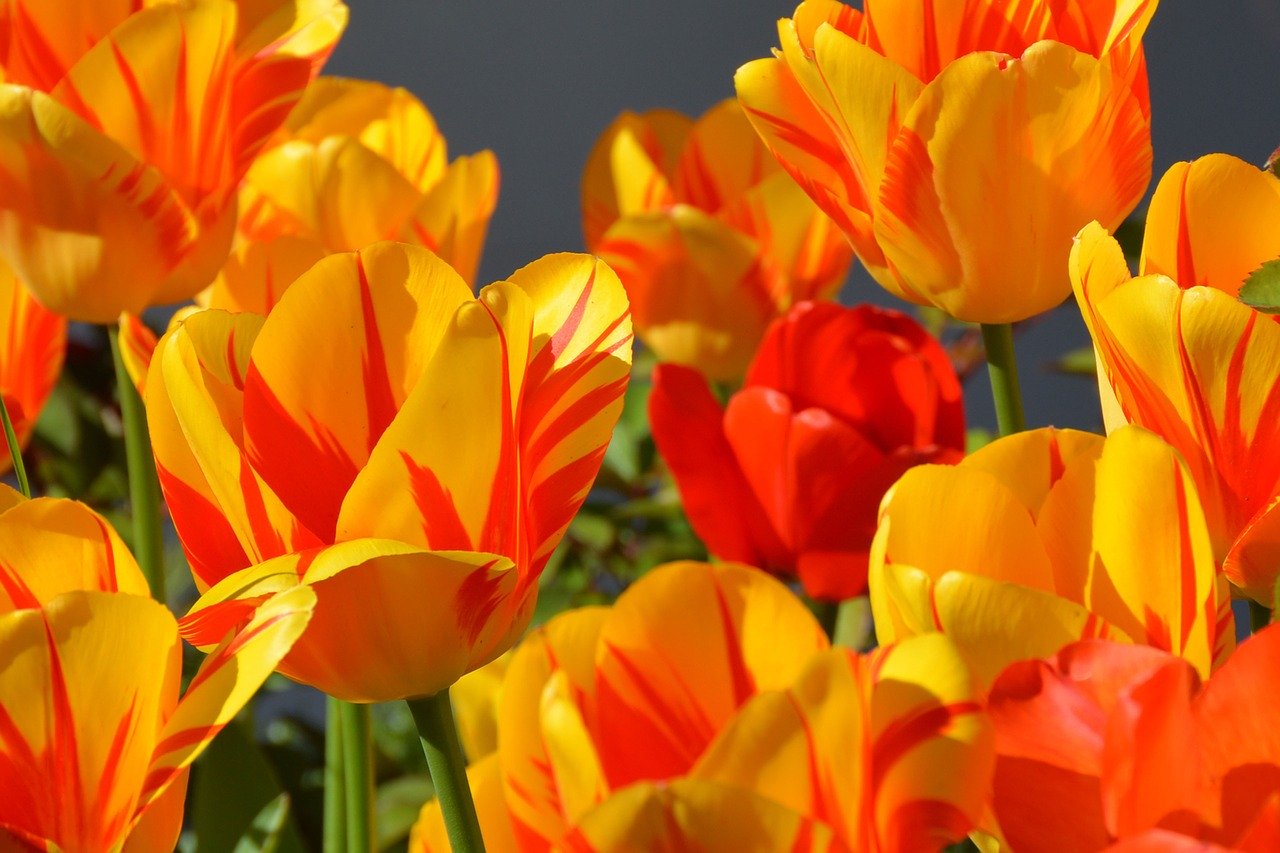We use affiliate links to run our site. When you buy through links on our site, we may earn an affiliate commission, without any added cost to you. Learn more
There are few sights in this world that can match the breathtaking beauty of a vibrant tulip in full bloom. Its colors, its petals, its graceful stem – all of these elements combine to create a stunning display that can truly take your breath away.
And if you’re anything like me, you know that there’s nothing quite like the feeling of seeing your own tulips flourish, standing tall and proud in your very own garden.
But achieving this level of magnificence isn’t always easy. There are challenges that can stand in the way of your tulips reaching their full potential.
The soil may not be quite right, the weather may not cooperate, or pests and diseases may wreak havoc on your delicate blooms. It can be disheartening to put in all that effort, only to see your tulips wither away.
But don’t worry, in this post, I will share with you the secrets of growing tulips that will leave you in awe. With these tips and tricks, you’ll be able to create a garden that’s bursting with life, color, and beauty.
Choose the perfect variety, plant them with care, and nurture them with love – and before you know it, you’ll be surrounded by a sea of magnificent tulips, each one more stunning than the last.
So let your heart be filled with hope and your soul be filled with wonder. Take a deep breath and immerse yourself in the magic of growing tulips. For it is a journey unlike any other.
Ideal Tulip Growing Environment
Ideal pH Range For Growing tulips:
The pH range ideal for tulips is between 6.0 to 7. In case the soil is more acidic you can add limestones to bring it to this level. On the other hand, If the pH level of the soil is less acidic try mixing peat moss or compost to bring down to that level.
Where to Plant Tulips in The Garden:
Tulips need a minimum of 5 to 6 hours of direct sunlight. So plant them accordingly. Lack of sunlight will weaken your plant.
The morning sun is especially important for your tulip plant. Be sure your tulip plants are not devoid of it. If the shade is unavoidable, be it in the afternoon. Sunlight received in the morning helps dry the leaves that are wet the whole night. Early sunlight will also reduce fungal activities.
If you live near the equator or other warm areas protect your tulip plants from scorching sunlight by adding some afternoon shade. Whereas if you are an inhabitant of a colder climate, a full day sun is ideal for your beautiful tulips.
A good air movement is also very important for tulip plants to fight against foliar diseases.
Never plant your tulip bush near shrubs, hedges, or other plants. They will block air movement and will also compete for sunlight, water, and plant nutrients.
Will Tulip Grow in Shade?
Yes, you can grow tulips in partial shade. Not all varieties will grow there but some shade-tolerant varieties won’t do very badly. Remember tulips always prefer full sunlight.
How to Choose The Right Variety For Your Garden:
First thing first. Know your local climate and the native tulip varieties. There are many varieties of plants available for planting.
Choose the breed that suits your local climate the best. For this, you can check your local nurseries. Here are tips for choosing the best tulip plant for growing: Select a good and healthy plant.
Can You Grow A tulip Plant From Seeds?
Growing a tulip plant from a seed is very challenging. The germination period varies from a few weeks to a few years. Though you can grow most of the species of tulips from seeds, cultivars and hybrids do not follow this method.
Growing Tulips From Bulbs:
The best way to grow tulips is from bulbs. bulbs produce flowering plants faster. A tulip plant that grows from bulbs usually blooms the following year. Whereas for seeds, it can be several years before the plant bears flowers.
You can buy tulips bulbs from your local nurseries or from online shops. Here are some tips for picking the right tulip bulbs:
- Make sure your tulip bulbs have only one nose. If it has two, it probably won’t flower.
- Choose plump bulbs without soft spots or dark.
- The basal plate (from where the roots emerge) should be firm and undamaged.
How To Plant The Tulips:

What Season Does Tulip Grow In:
Spring is the perfect time for planting your tulips. The weather is just perfect. Before planting the bulbs soak them for 8-10 hours in warm water. Soaking allows tulips bulbs to absorb enough water to start growing immediately. This will save you two weeks of time.
Prune the canes. Remove any thin or weak growth. The canes should not have more than 5 healthy buds.
How Deep Should Tulips Be Planted?
Plant tulip bulbs 8 to 10 inches deep into the ground. This will protect them from rodents and prolong their life.
Add a good quality compost in the hole. Set the bulb in the hole with the pointy end up.
Now add some water to your newly planted tulip bulb. Cover with soil and press the soil firmly.
If rodents are a problem, plant bulbs in buried wire cages.
Do You Need To Fertilize Tulips?
Yes, you need to fertilize tulips. For a plant like tulips, the usual water and sunlight won’t do much good. You have to give them a good amount of feeding.
What Is The Best Fertilizer For Tulips?
All plants including tulips need N-P-K for a boost to excellent health. Along with these tulips also need magnesium, sulfur, copper, iron, and manganese for thriving.
Apart from compost, apply equal parts of blood meal and bone meal to fertilize your tulips.
How Often To Fertilize Tulips:
Fertilizing tulips once a year, in the fall. In the fall the bulbs send out roots to prepare for the winter so that is the best time for you to feed tulips.
Add fertilizer on top of the soil.
This way the fertilizer would reach the roots slowly and won’t burn.
Avoid fertilizing tulips in the springs.
How To Water Your Tulips:
Tulips don’t need a lot of water they can survive on very little supplemental watering. Water your tulips once in a week. Only during long drought periods, water your tulips weekly to keep the soil moist.
If you are growing tulips in containers you have to water more frequently. As containers dry out fast, water requirements will be more. Before water though, always check the soil if it is dry or not.
What to Grow With Tulip:
Tulips look great in mixed displays. You can add complementary and contrasting flowers and foliage with tulips. Just make sure you choose plants that also thrive in sun and free-draining soil – just like tulips.
Here are some of the best plants that you can grow along with tulips:
- Crocus
- Daffodil
- Forget-me-nots
- Virginia bluebells
- Japanese barberry
How To Prune Tulips:
Tulip flowers fade before the foliage dies. At this stage, the flower starts to produce seeds. Tulips are not very good at growing from seeds. So once the flower stars dropping petals, snip off the bloom and remove the swollen pod. Don’t remove the stem it will refuel the bulb.
You can also remove the dead foliage from time to time once the individual leaves turn yellow.
Growing Tulips In Containers?
Tulips in containers are eye-catching, portable, and protected. if you are growing tulips in the container, fertilizing becomes very important. As the roots of the plant cannot reach further into the soil in search of food you need to provide them regularly.
But be aware of over-fertilizing. It causes the plants to yield lesser flower sometimes with root injury can actually kill the plant. One of the best options in this dilemma is to feed them slow-releasing fertilizers.
Don’t forget to PIN IT

Amazon and the Amazon logo are trademarks of Amazon.com, Inc, or its affiliates.

Hi there! My name is Prasenjit and I’m an avid gardener and someone who has grown a passion for growing plants. From my hands-on experience, I have learned what works and what doesn’t. Here I share everything I have learned.
